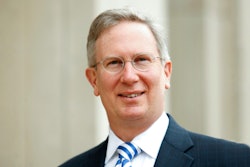Since 1980, Dr. Linda Hayden has been able to bring innovation to Elizabeth City State University by seeking out and partnering with entities like the U.S. Navy and NASA. For years, these partnerships allowed faculty, students and administrators in the computer science department and other departments to gain early exposure to cutting-edge hardware and software tools. With NASA funding, ECSU also served as the lead historically Black campus in assisting several HBCUs in North Carolina and Virginia in establishing campus networks during the 1990s.
As a result, the accumulated experience among ECSU faculty members and staff as well as the integration of cutting-edge tools into the campus IT infrastructure paved the way for the establishment of the Center for Remote Sensing for Education and Research (CERSER), an interdisciplinary research center. Since 2003, CERSER has attracted nearly $10 million in grant support, much of which has gone into establishing high-performance computing resources and advanced information technology laboratories. One outgrowth of CERSER has been its participation in a multi-university research team that conducts remote sensing of ice sheets close to the North and South Poles.
“We’ve sent one student to Antarctica on a research trip, and this summer another student and a faculty member are going to Greenland to conduct (global climate change) research,” says Hayden, who is the CERSER director.
In the 1990s, it was common to read and hear about HBCUs described as Digital Divide have-nots in a society that was experiencing rapid leaps in computing and the use of the Internet. HBCUs, which have had a long history of struggling to gain adequate funding, did see wealthier, majority White institutions moving quickly ahead in the push for sophisticated campus networks, Web-based distance education programs and use of the Internet as a research and education tool.
A decade later, it’s not as common to hear the Digital Divide term applied to HBCUs because of IT struggles. A number of schools are enjoying rich, robust IT infrastructures and can support cutting-edge research and teaching, in part from having advanced IT tools. And for small to mid-size historically Black institutions like Elizabeth City State University, it’s become clear that long-range planning, the cultivation of strategic partners, and careful IT investment have proven to be winning strategies. Observers say there’s been considerable IT progress among HBCUs since the 1990s, but point out that some campuses still struggle to keep up.
“I think there probably is a divide in some areas. It started out as a case of access that students had to computers. I suspect that it has pretty much gone away with the declining cost of computers, and so students can get access pretty easily,” says Dr. Calvin Lowe, the former president of Bowie State University in Bowie, Md.
“There is some disparity with the networking infrastructure. The question of whether a school has a campus-wide wireless network is an example. I think the challenges really fall into the category of enterprise systems and underperforming networks,” he adds.
Lowe, a physicist and a vice president at the National Institute of Aerospace in Hampton, Va., presided over Bowie State from 2000 to 2006 when the school gained recognition for building a high-performance cluster of computers developed to handle tasks typically undertaken by expensive supercomputers.
Stephanie E. Myers, the vice president of the Washington, D.C.-based R.J. Myers Publishing and Consulting Company, led a team of consultants in writing “Historically Black Colleges and Universities: An Assessment of Networking and Connectivity,” a study undertaken in 2000 by the National Association for Equal Opportunity in Higher Education (NAFEO). The study, which found HBCUs lagging in IT development, became the basis for federal legislation aimed at bridging the technology gap. After several years of consideration and modification, the legislation has been recently incorporated into the current Higher Education Act reauthorization, which is pending in the U.S. Congress.
“I think our study helped promote awareness, and there’s been excellent progress at the campuses. They’ve upgraded their systems and expanded computer laboratories, and more students now own their own computers,” Myers says.
“However, with technology changing constantly, the HBCUs need lots of help to keep pace with the advances in Web-based education and infrastructure. In 2000, we found that not many students were coming to school with their (own) computers, so they had to rely on campus laboratories. There has been some improvement, but there’s still a long way to go to ensure that all students have 24/7 connectivity,” she adds.
A Long Time Coming
HBCU advocates are optimistic that historically Black schools along with Hispanic-serving institutions and tribal colleges will get a much-needed source of funding from including the minority-serving institutions (MSIs) technology grant program in the reauthorization of the Higher Education Act. The legislation would establish a federal grant program for MSIs to obtain instrumentation, equipment, networking capability, hardware and software, digital network technology, and wireless technology. While the Senate version of the legislation did not specify an annual spending amount, the House-approved version recommended $250 million in total annual awards.
The grants could also serve to fund activities that include equipment upgrades, technology training, campus wiring, and professional development of administrators and faculty in science, technology, engineering or mathematics. MSIs could use grant funding to provide their students universal access to campus networks and increase connectivity rates.
“There have been improvements (among HBCUs). But there’s still a great need, and that’s why the legislation is so urgent. And, of course, in the year 2000 the whole world was not where it is today with Internet connectivity. They’re doing what they can to keep pace, but technology changes very, very fast,” Myers says.
“So now you have a whole new world of connectivity with the Wi-Fi connections and with the handheld systems. So it’s important that students and faculty know how to operate all of these systems,” she notes.
Recalling his visits to Black college campuses in Virginia, U.S. Sen. John Warner, R-Va., strongly urged his Senate colleagues last summer to pass the legislation, which had been stalled in Congress since 2003.
“I remember in the 1980s, traveling to several of the historically – and they referred to them as “historically Black colleges” in the Commonwealth of Virginia – I noticed the absence of so much infrastructure in these struggling institutions that other institutions often had in abundance. Having had an engineering background myself, at my old school, Washington Lee University, we had laboratories with an abundance of equipment and all types of high technology,” Warner said.
A major obstacle that has stalled the MSI technology legislation has been disagreement over which government agency would have the authority to manage the technology grant program. The House has wanted the U.S. Department of Commerce to run the program, while the Senate, until last summer, favored the National Science Foundation. This past summer, the Senate designated the U.S. Department of Education to run the program. Observers believe the House and Senate conference committee members will work out a satisfactory compromise.
One of the more notable findings in the NAFEO study was that “fewer than 25 percent of our students own their computing resources.”
“This means that in spite of the best efforts of HBCUs, students must often wait hours at labs to use computers in order to gain access to the Internet and the World Wide Web,” according to the study.
HBCU officials believe that the student computer ownership rate has increased since 2000, even though statistics show that most campuses have struggled to develop support programs that help students purchase computers. In the 2007 NAFEO Annual Membership Survey, only nine of the 40 schools, or 22.5 percent, that responded to the survey indicated they have a technology loan program for their students. Only six institutions, or 15 percent of the survey group, reported offering subsidies, discounts or other financial incentives to assist students with computer purchases.
Myers believes the student computer ownership rate has likely doubled since 2000. “I don’t have recent statistics to back that up, but I would say that it’s doubled to at least 50 percent. But there are still a lot of students who attend HBCUs who don’t have the money to buy computers. So the importance of the labs at the HBCUs is still critical,” she says.
Being Clever in Tough Times
IT administrators at HBCUs cite the constant need to find and deploy creative and innovative solutions to maintain and improve campus IT infrastructure. For example, outside funding can play a critical role in enabling a campus to move forward with significant IT improvements while campus funding may be stagnant or slightly declining. At Norfolk State University in Norfolk, Va., there’s been a 20 percent reduction in IT staff members over the past four years, but the department has moved into a new building and has added a state-of-the-art Virtualization and Collaboration Center as part of its new headquarters.
The center enables sophisticated videoconferencing and collaborative work environments coordinated with off-campus institutions and organizations. The center provides network access to supercomputing centers and other high-performance computer networks for collaboration among researchers as well as access to the Internet2 network.
Norfolk State reports that the center gained high priority in the planning of the Marie V. McDemmond Center for Applied Research, a $35 million facility which opened in 2007. Officials devoted $150,000 of university Title III funding to help pay for the center. Title III funding is appropriated by Congress to minority-serving institutions as part of the Higher Education Act.
“We’re so proud of our center. It took a lot of planning, cooperation and brainstorming to make it happen,” says Margaret Massey, the associate vice president for technology at Norfolk State University.
She says that in addition to faculty and administrative use, the center has become popular with corporations in the southeastern Virginia region who regularly book the facility for videoconference meetings.
Teresa Walker, the assistant director of technology and director of the Academic Technology Mall at Hampton University, says it’s possible for IT departments to create value for their campuses as well as their local communities by putting their expertise to work on service-oriented projects. Two years ago with a grant from the U.S. Department of Homeland Security, Hampton’s Center for Information Technology developed a software visualization program that enables emergency responders to gain access to a visual rendering of large building interiors, according to Walker.
Using a laptop, fire, police and other emergency personnel can immediately summon images of a particular building’s complete interior structure, including the detailed locations of its inhabitants. The visualization program is intended to help emergency responders learn as much as possible about a building’s interior structure. Walker says the program has been tested at a public school in the Hampton, Va., area and will soon undergo testing at the Hampton campus.
“With this program, emergency personnel can see everything in a building. They can see all the entry and exit points; they’re able to find all the people who may occupy a building at a given time,” she says.
Click here to post and read comments
© Copyright 2005 by DiverseEducation.com


















